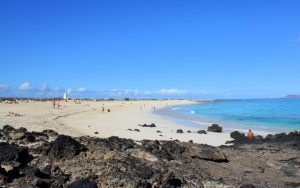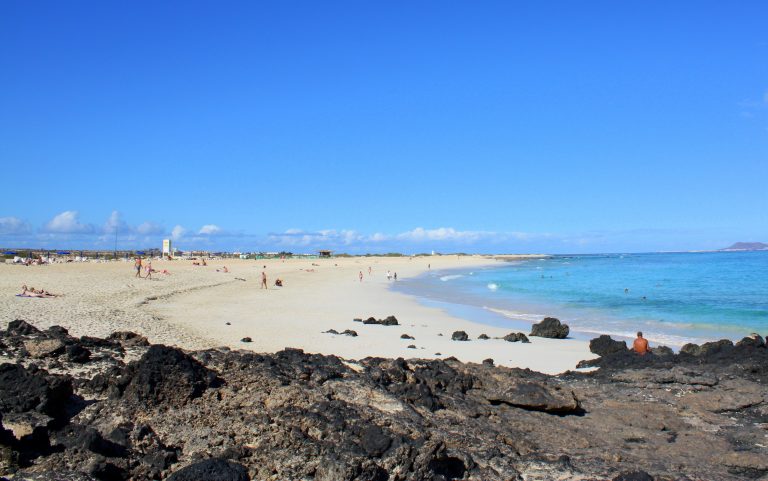In May of the year 2009, the Spanish island Fuerteventura was given the status Biosphere Reserve by UNESCO because the island is very unique and full of rare birds and plants, many of which are only found on the island itself. UNESCO Biosphere Reserves are vast and extensive studies that aim to show how places of rich natural beauty and rare species can be sustained and it is hoped that it will mean that the island is seen as a high quality tourism spot.

Fuerteventura’s western coast with its more than 100 kms of beaches and cliffs are almost entirely untouched by man, which is a rarity in the Canary Islands. As Fuerteventura has the largest coverage of dry steppe of all the Canary Islands, it means it is home to many rare birds such as the Canary Islands Chat, the Egyptian Vulture and the Houbara Bustard. The Canary Islands Chat interestingly is a small sparrow sort of bird with a black head that was once found in all of the islands but now only exists on Fuerteventura.
Any mammals found on the island have either been introduced by accident or deliberately. The goats, donkeys and camels all were introduced deliberately and you can see shepherds with their goats walking in the rolling plains and over the hills. Goat milk from Fuerteventura is considered the best of any found in the other Canary Islands because the animals feed on the aromatic herbs, lichens and wild grasses that grow wild on the scree and dry steppe. On the west coast, in some of the most remote areas, wild goats and donkeys freely roam the land undisturbed by humans.
Almost fifty percent of Fuerteventura’s entire area either has conservation status or is under legal protection with thirteen officially protected natural areas and parks. There are plans for the island’s western coast to be turned into a National Park. This covers a distance of 100 km and would also include beaches that were used in the past by leatherback and loggerhead turtles for laying eggs. The Environmental Agency of the island has started an adventurous project to introduce loggerhead turtles back onto the west coast. Now, every year loggerhead turtle eggs are being transported from Cape Verde Islands to Cofete beach and are placed inside manmade nests. When the very vulnerable and delicate hatchlings surface they are placed inside specially designed tanks for 2 years until they are released. It is hoped that in around ten years’ time the first loggerhead female in more than 100 years will return to the beaches of the island to lay eggs.
In the legally protected park of Isla De Los Lobos many bird stop off on the marine wetlands there while on route from Africa to mainland Europe. It has also been recorded that there has been some species that are choosing to nest on Fuerteventura rather than flying across to the north of Europe and Siberia, which suggests that either birds are beginning to find the island a much safer habitat or the change of climate is disturbing their usual patterns. There are major plans to reintroduce the Mediterranean monk seal to the island, one of the most endangered species in Europe. The monk seals were hunted to the point of extinction by pirates who used Fuerteventura as a base from which to attack ships travelling from the New World to Europe.
Although you may only see the beaches and sea advertised, or the clubs and the nightlife, Fuerteventura has so much more to offer humanity than just a great place to get drunk in the sun. It could easily be held up alongside the Galapagos Islands and Madagascar as one of the most bio diverse areas of the world.
